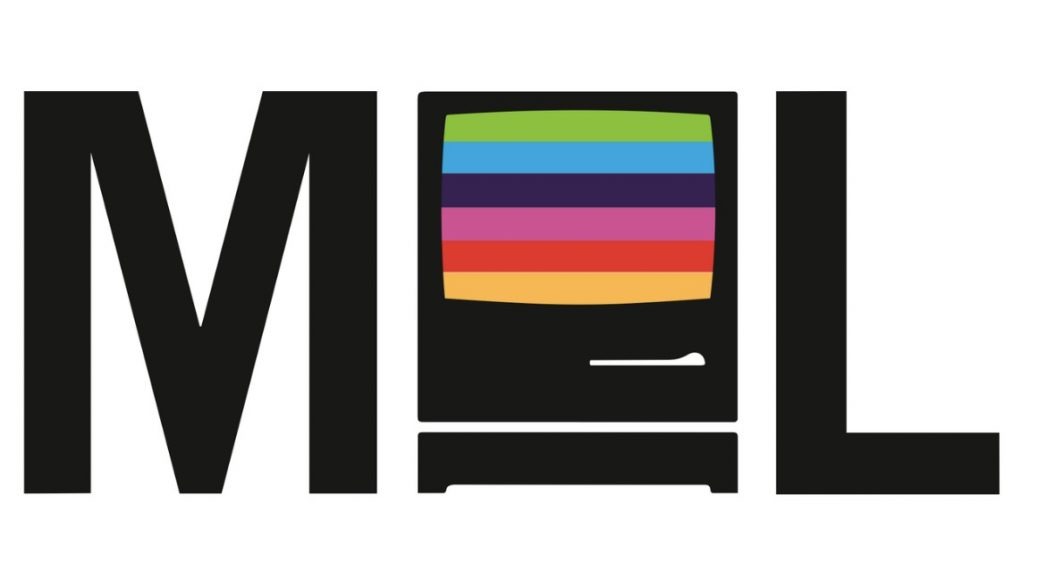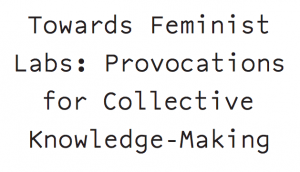The Media Archaeology Lab: letting people discover different possibilities for innovation
The Media Archaeology Lab (MAL) is a community-driven, public research space in the basement of an unassuming house on the University of Colorado’s Boulder campus.
Along with its name, and its contents, this decade-old project makes for such a local curiosity it was recently named as a lesser-known place for travellers to discover on Atlas Obscura.
Opened in 2009, it’s now home to a catalogue of more than 1,000 “so-called obsolete” media technologies, its founder, Lori Emerson explains.

MAL: the original Nintendo Entertainment System
Everything from ‘magic lanterns’ that represent some of the earliest attempts at creating virtual realities, to some of the first desktop computers and games consoles, along with all manner of software and media recordings.
“Everything in the Lab works and is meant to be played with, turned on, researched and even used to create art,” Emerson says.
As associate professor in the English department, along with the near-unique Intermedia Arts, Writing and Performance programme, during term-time Emerson uses the Lab to get more than 200 students every week thinking about ‘the possible’.
Asking how and why
Whether that’s analysing the ‘how’ of literary production in her English classes – looking at the hardware and the software that got the words onto the page – or “pursuing dead ends in technological development”. But the Lab is open to all.
It often gets donations, whether that’s a telephone switchboard used by the Stasi, the original Japanese version of the Nintendo Entertainment System, the Famicom, or a Friden mechanical calculator. There’s even an open wishlist, including a callout for desktop and laptop computers from outside North America and the UK.
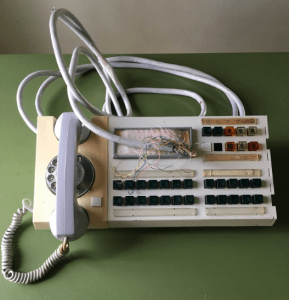
MAL: “… discovered in a heap of discarded tech of surveillance and bureaucracy shortly after the Berlin wall came down”
“The Lab is really interesting because you can make whatever you want of the collection. At first glance, you might think that it’s only for people interested in the history of computing.
“But, as it turns out, the collection can be used to explore user interfaces, the history of fonts and typefaces, the history of sound recording, early digital art, digital literature, even a bit of film – the list goes on.
Against “planned obsolescence”
“The Lab is really working against this notion of planned obsolescence – in a way, we’re instilling students with a criticality that isn’t available at other places.
“Just trying to get them thinking about the value of a computer from 1976, that works by switches and has no visual output at all, trying to get them to think ‘well, what could this thing be good for? How can we value this thing?’.
“We’re trying to instil them with a politics that I hope they take with them to these tech companies or startup companies.”
Recent PhD graduate libi striegl used the Lab to design workshops for undergraduate students to get them to think about how to take apart digital devices, put them back together and how to fix them. Another, Maya Livio, has been working closely with Emerson to explore the potential of a ‘feminist lab’.
“The term ‘feminist lab’ is a handy umbrella term to get people to think harder about all of those little, everyday activities that make up the lab.
“We try to think about ‘what’s the infrastructure of your lab? How is that infrastructure prohibiting people from either wanting to enter, or physically being able to enter? What’s a feminist budget look like?’.
A transparent and fair lab?
“‘How do you figure out who to accept money from and on what terms? How do you come up with budgets that are transparent, and that are fair, that are based on notions of equity?’.
“Infrastructure aside, ‘how do you run a meeting in a lab that’s inclusive, potentially non-hierarchical, that’s not built on traditional notions of authority? How do you give credit and attribution in terms of the outputs of your lab?’.
“It sounds like a very small thing but if you were going to publish an article with a group of people, if you actually believe in feminist principles, why would you have the lab director listed first and everyone else listed second, third, fourth? I mean, it’s very administrative, bureaucratic, boring things that have a lot of significance to them, as it turns out.”
As a founder who’s still at the helm, Emerson is rather proud the Lab has lasted.
“In the arts and humanities, labs don’t usually last that long, probably for funding reasons. I think also, at some point, I realised that the Lab was at its best and was only going to survive when it turned into a project that wasn’t about me and my research interests. It turned into a communal enterprise.”
Powered by volunteers
That means an “army” of 12 volunteers, the Mal Pals, some from campus, others from technology companies or government, usually with a combination of interest in education and vintage computing, helping with everything from cleaning to cataloguing. It’s usually open for five hours, five or six days a week, to anyone that wants to drop by. “We really try to keep the Lab an open, porous, welcoming, inclusive space,” she adds.
The Lab has hosted artists- and researchers-in-residence since 2013, funding themselves to come for a week or two to spend doing whatever they want – whether that’s creating soft crochet patterns out of hard computers to “inspire computer users to ‘look under the hood’ of their own machines”, or delving into the meanings created by our keyboards.
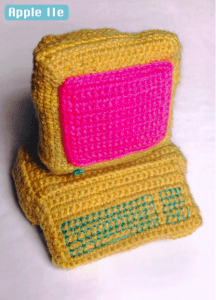
Sarah Rooney: Soft Computers
Building on her experience with the MAL, Emerson recently teamed up with fellow researchers Darren Wershler and Jussi Parikka to bring together what they all know about the thing we call ‘media labs’ in THE LAB BOOK, out in early 2021.
“I was really keen on giving a long history of media labs – so that we aren’t continually living in this present moment, over and over again, where people are like ‘I’m going to start a lab!’. I think they matter as a subject area – really to try to track how people are appropriating the term – sometimes for good and sometimes for ill.
“As we found out – a lab can be absolutely anything. We came up with examples of companies calling a line of grooming products ‘labs’, fashion displays in department stores – ‘a lab’. I have a colleague who was thinking about getting a group of people together to read – she wanted to call it a ‘lab’.”
What Emerson and her fellow authors tried to do, detailed on their What Is A Media Lab website, was understand why people often and continually want to use this word.
Why ‘media lab’?
“There’s plenty of examples of ‘anti-lab’ labs and there are also plenty of examples of labs that appear to be purely appropriating the idea to legitimise what they’re trying to do, by adding a veneer of scientificity.
“We have a final chapter called ‘techniques’ where we were trying to catalogue key techniques that people seem to be using in media labs and giving people the critical apparatus to think about – ‘why are you obsessed with fabricating or 3D printing? Are you thinking about the larger circumstance about the space that it takes place in?’.”
“En route to providing the longer history, you start to see how there have been some problematic managerial techniques involved in the running of some labs. That maybe people don’t know about or they haven’t thought about.”
And, as it happens, they charted the problem right back to the 19th century lab of Thomas Edison, the now-world-famous brand, Menlo Park.
“A lot of these labs have a disconnect between how they market themselves, how they talk about themselves, how they appear, or try to appear, to the public – and what actually goes on. So there’s a lot of talk about ‘innovation’, ‘flexibility’, ‘collaboration’, ‘interdisciplinarity’ or ‘anti-disciplinarity’.
“Somehow a lot of that rhetoric gets fed into the space itself, and just ends up creating more of the same, and actually creating problematic hierarchies. Or ‘innovative new technologies’ that lack a politics, or lack understanding of how the technology relates to people and the world.”
Reflecting on the COVID-19 pandemic, with the MAL having to get by online, she adds: “If I had to generalise about labs, I would say, labs are all about hands-on work, so if you can’t do the hands-on work, you really can’t be in the lab, you can’t do lab work at all.”
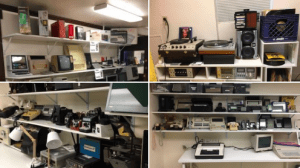
MAL
Emerson’s Lab, as opposed to Edison’s, as its name suggests, is also associated with the research field of media archaeology.
“Generally speaking, it’s interested in getting at the life, even the ‘consciousness’ of media – trying to cut out human perspective to understand the life of the machine. And then understand how the life of the machine determines what and how you’re able to create.
“The other branch of media archaeology is interested in pursuing dead ends in technological development – so there’s a part of it that’s interested in the realm of the imagination – ‘how would have things been different if we had pursued this little branch off the main line? Or how could things still be different?’.”
Changing the criteria for innovation
Emerson is writing another book on this theme, titled Other Networks. “It’s something I bring into the classroom and try to explore – other configurations and networks that existed before the internet became what it is – I try to get students to reimagine how things could be different. ‘What would a different internet look like?’.
One real example she describes are bulletin board systems that were around in the 1980s and the early 1990s, made up of just a few hundred people in a small area who wanted to share – and avoid long-distance call charges.
“Which I think produces something quite wonderful and not commercial, and much more oriented towards community. Interestingly enough, the online interactions led to in-person interactions, which I think is quite different from what we have nowadays.
“That’s something I’ve been trying to get my students to think about – ‘what if we change our criteria for technological progress or development or innovation? And we’re not just obsessed with speed and efficiency and having things right now?’.
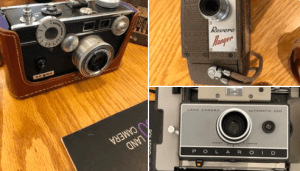
MAL
“‘What if we change the criteria and move towards something that’s slower, more methodical and more cooperatively minded – so that we actually own the network infrastructure, rather than having a major conglomeration own it?’.”
Asked if her students like the idea, she says they “love it, in principle”. But they’re as bound up in the speed of things as anyone else, keen to get things done and get a job.
Beyond man
“One drawback to the way the humanities have thought about themselves has been the totalising push to always put the human front and centre – above and beyond the environment, nonhuman animals, all sorts of things – and of course this notion of human is also always almost ‘white male’.
“So anything that unsettles that perspective, which media archaeology tries to do, I think is absolutely worthwhile. And, you know, we’re staring down the barrel of an apocalypse and I don’t think that yet more humanism is going to help us with that problem.
“So media archaeology and its method of trying to get outside of the human I think is really important and can be really effective.”
But she admits it has its problems. “I think it can also be really problematic if people attempt to believe that’s possible – I don’t think it’s possible to get outside of your human perspective.
“Another, related problem, with media archaeology is that it can be very, deeply apolitical – it takes its interest in hardware so seriously that it can completely neglect the politics of humans going on all around them – and, again, neglects power and the fact this white male perspective dominates everything.
“You’ll notice when doing research in media archaeology there are hardly any women mentioned – as it turns out, there are lots of women doing media archaeology-like work – but a combination of the way people are defining media archaeology, and their own blindspots about the people who they tend to focus, which are the white, male German theorists, exclude all of those women.”
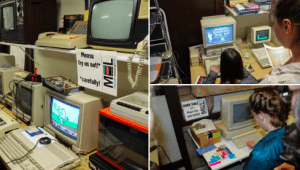
MAL: scavenger hunt event for teens involved in the CU Science Discovery program
Emerson says she’s been lucky to carve out a space in her institution to do her work. “People didn’t really realise what we were doing until the MAL became established.” The lab has a longstanding supporter in the shape of a local venture capitalist and gets some university funding – but she believes its unusual style means money isn’t always forthcoming.
“It does seem like, the bigger your budget the more freedom you have to innovate in a more open-ended way – but then the problem is – trying to figure out where the money comes from. I’m just guessing there’s no way to have a budget that big and make sure that all of your funding is ethically sourced.”
You can explore the Media Archaeology Lab here.
CONTACT
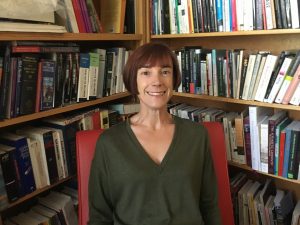
Lori Emerson, founding director of the Media Archaeology Lab at the University of Colorado
Twitter: @loriemerson @mediarchaeology.

